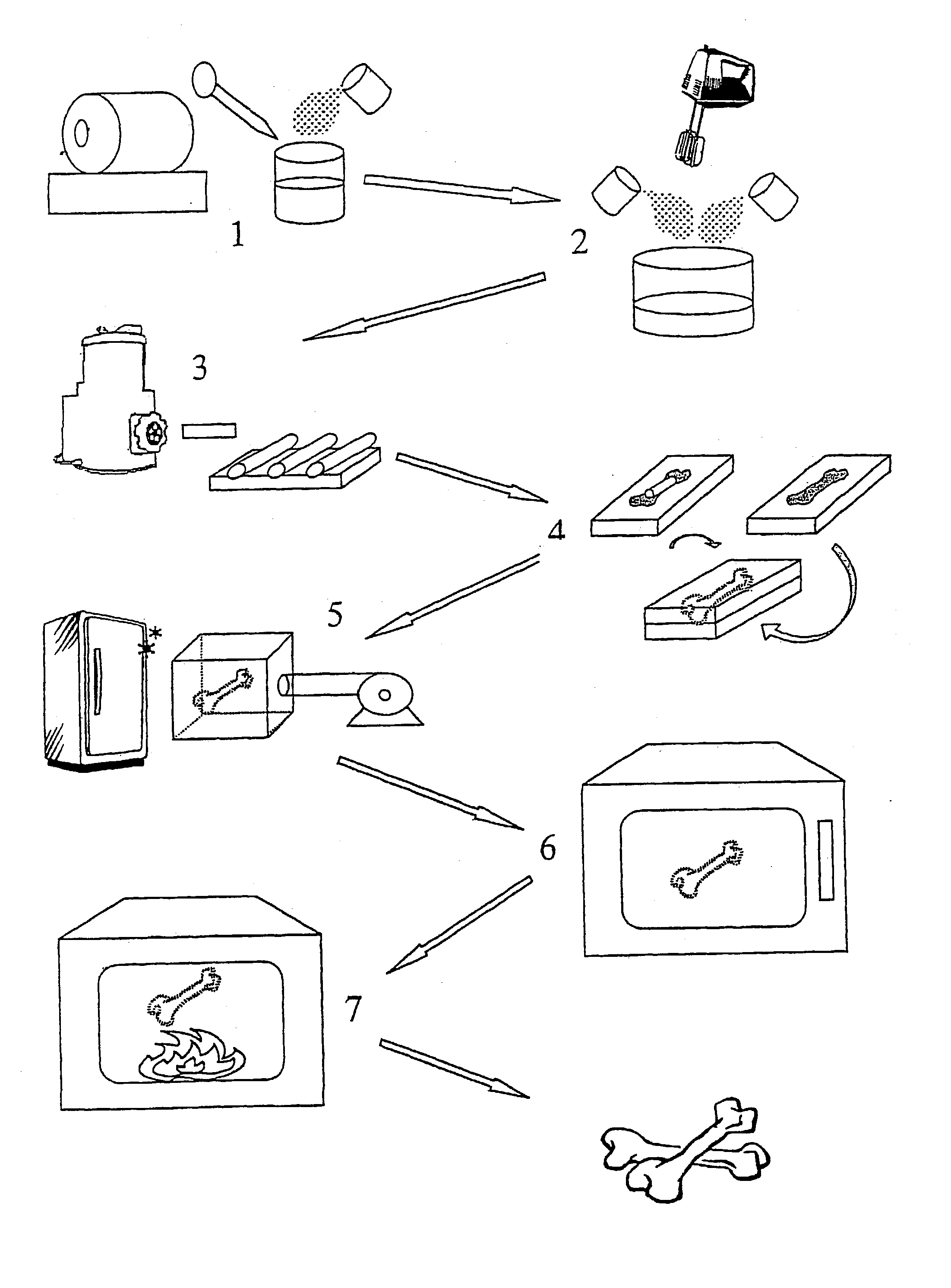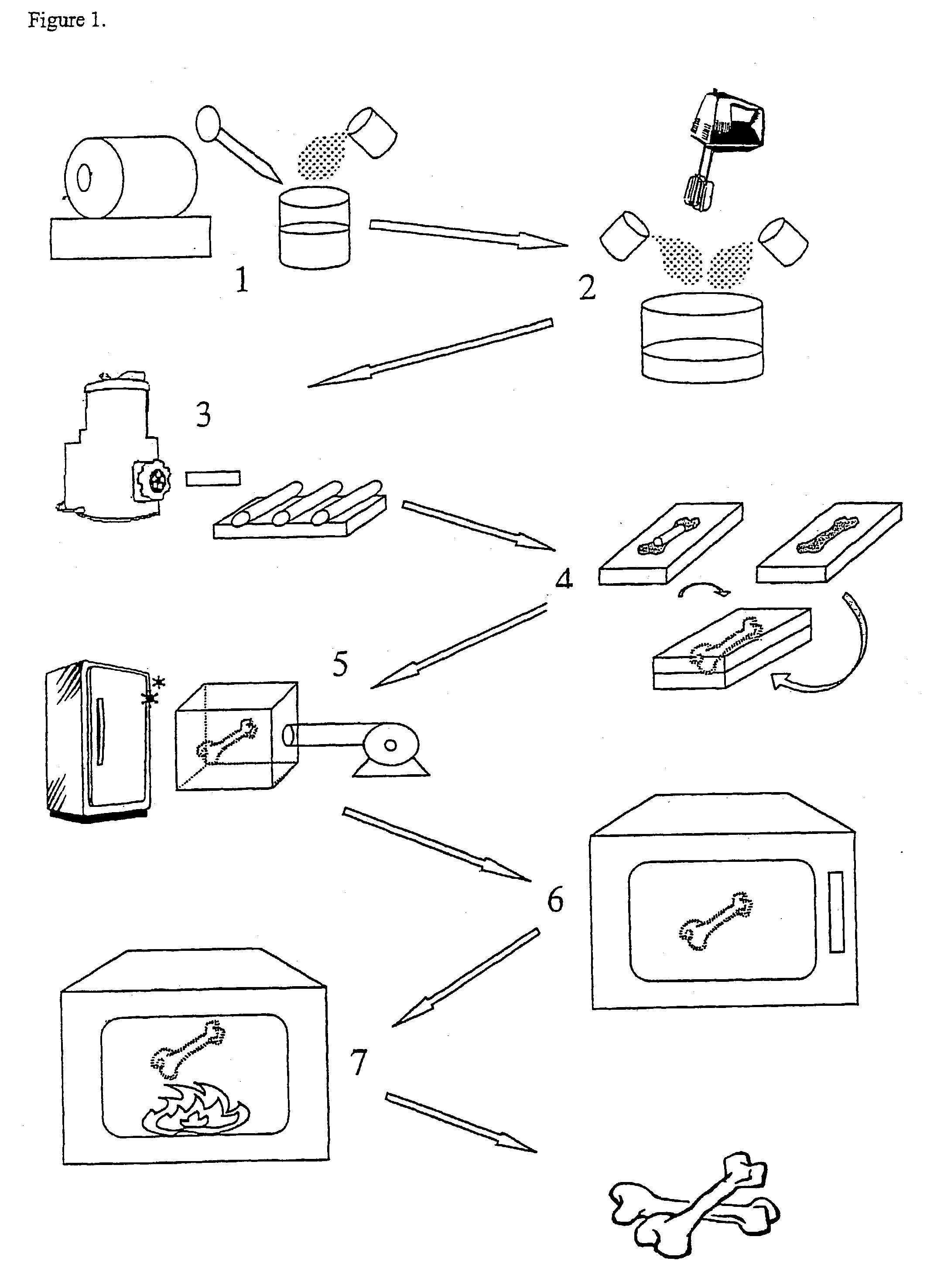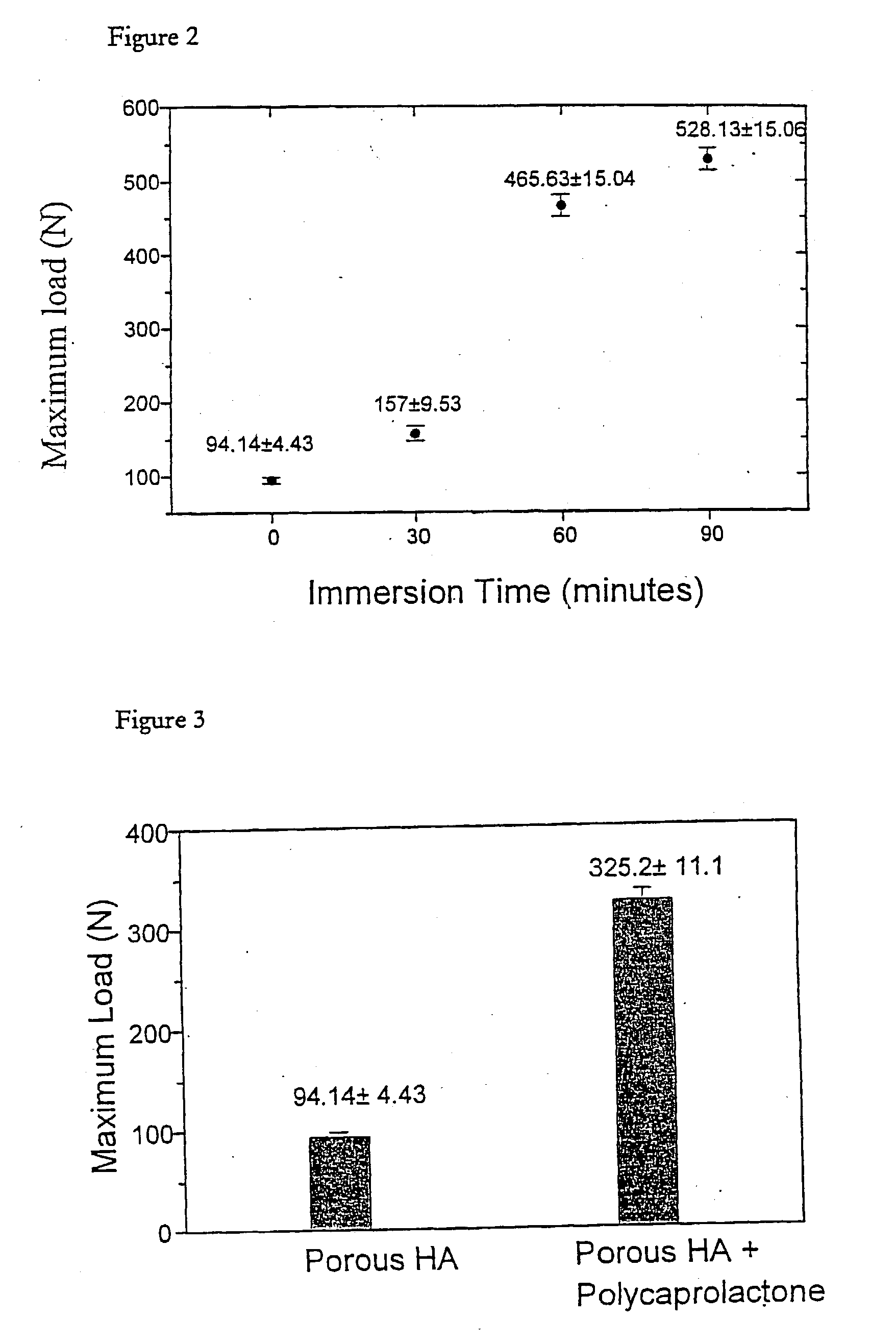Porous synthetic bone graft and method of manufacture thereof
a synthetic bone and porous technology, applied in the field of porous synthetic bone graft and its manufacture, can solve the problems of not offering the equivalent biomechanical and osteointergrative properties, the graft is not suitable for large-scale application or as the permanent replacement, and the bulk annealing of bioceramics is difficult, etc., to achieve the effect of facilitating osteoblast attachment and stimulating mineralization, and unique and extremely flexible porous structur
- Summary
- Abstract
- Description
- Claims
- Application Information
AI Technical Summary
Benefits of technology
Problems solved by technology
Method used
Image
Examples
example 2
[0065] Sample of the porous HA product obtained in Example 1B were immersed in boiling HA slurry with an average particle size of 0.2 .mu.m. The immersion times were from 30 minutes to 90 minutes with a 30 minutes interval and the slurry was stirred constantly. Afterwards the excess slurry was removed by a centrifuge process (from 2500 to 15000 rpm). The samples were subjected to the annealing process at 1280.degree. C. for 5 hours.
[0066] A mechanical test of the samples was carried out using a Lloyd bench-top test machine fitted with a 2.5 kN load cell and a remote computer controlled unit. The load was applied to the specimens (average sample contact area is 0.8 cm.sup.2) with a crosshead speed of 0.1 mm per minute until brittle failure occurred. The results obtained are shown in FIG. 2. It can be seen that the compressive strength of the porous HA samples is increased as the immersion time increases.
example 3
[0067] 6 grams of PCL was melted in a 150 cc glass beaker by placing it in a 60.degree. C. oven. After the solid PCL had melted to a clear sticky fluid, 20 ml acetone was added to dissolve the PCl and form a fluent solution. The viscosity of the solution was 0.8835.+-.0.025 pas. Porous samples of Example 1B were then immersed in the solution and kept at boiling by placing it on a hot plate at constant temperature of 57.degree. C.
[0068] After 20 minutes, the samples were removed and subjected to a centrifuge process (from 2500 to 15000 rpm) to remove any excess solution from the interconnected macroporous structure. The samples were then placed in a 60.degree. C. oven to melt any blocking PCL in the macroporous structure and the centrifuge process was repeated.
[0069] The mechanical test of Example 2 was carried out. The results obtained as shown in FIG. 3. It can be seen that the PCL reinforced porous HA samples had a significantly increased compressive strength.
[0070] The porous pro...
PUM
| Property | Measurement | Unit |
|---|---|---|
| particle size | aaaaa | aaaaa |
| temperature | aaaaa | aaaaa |
| temperature | aaaaa | aaaaa |
Abstract
Description
Claims
Application Information
 Login to View More
Login to View More - R&D
- Intellectual Property
- Life Sciences
- Materials
- Tech Scout
- Unparalleled Data Quality
- Higher Quality Content
- 60% Fewer Hallucinations
Browse by: Latest US Patents, China's latest patents, Technical Efficacy Thesaurus, Application Domain, Technology Topic, Popular Technical Reports.
© 2025 PatSnap. All rights reserved.Legal|Privacy policy|Modern Slavery Act Transparency Statement|Sitemap|About US| Contact US: help@patsnap.com



